Forests Warm & Moist enough for trees


Forest Outcomes
-
Describe the climate characteristics of taiga forests as well as their primary uses.
-
Describe the climate characteristics of temperate forests, and explain management issues.
-
Describe the climate characteristics of tropical rainforests, and explain how organisms survive low-light and low-nutrient soils.
Taiga – Boreal Coniferous Forests
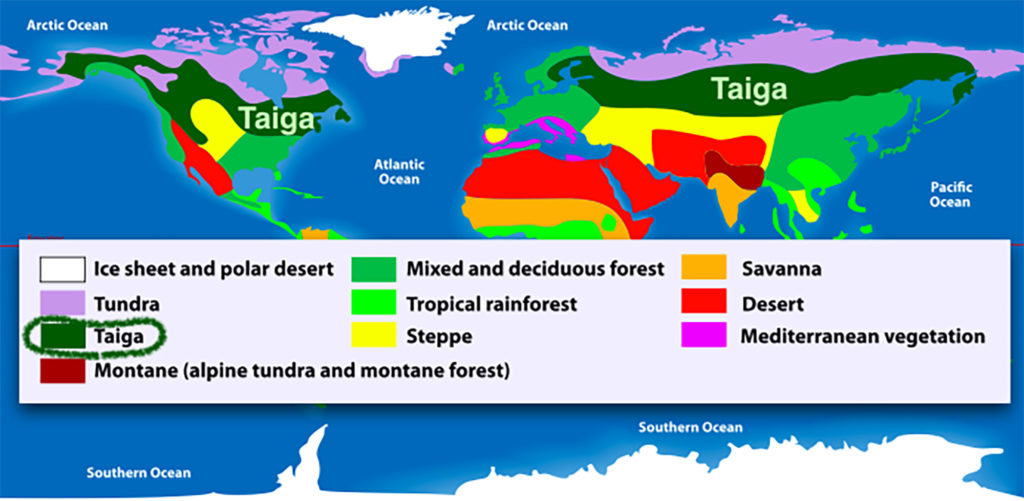
Taiga, also called the boreal (northern) coniferous forests, are cold but have enough moisture to support tree growth.

It still gets cold, but not as cold as the more northern tundra, where a layer of soil water stays permanently frozen (permafrost). In the taiga it is warm and wet enough for the coniferous trees that photosynthesize year-round.
Countries with taiga typically have well-developed forestry industries, it is typically too cold and dry for grain agriculture. Although these forests are the most stable, there have been increased large-scale fires in recent years.

Temperate Deciduous & Coniferous Forests
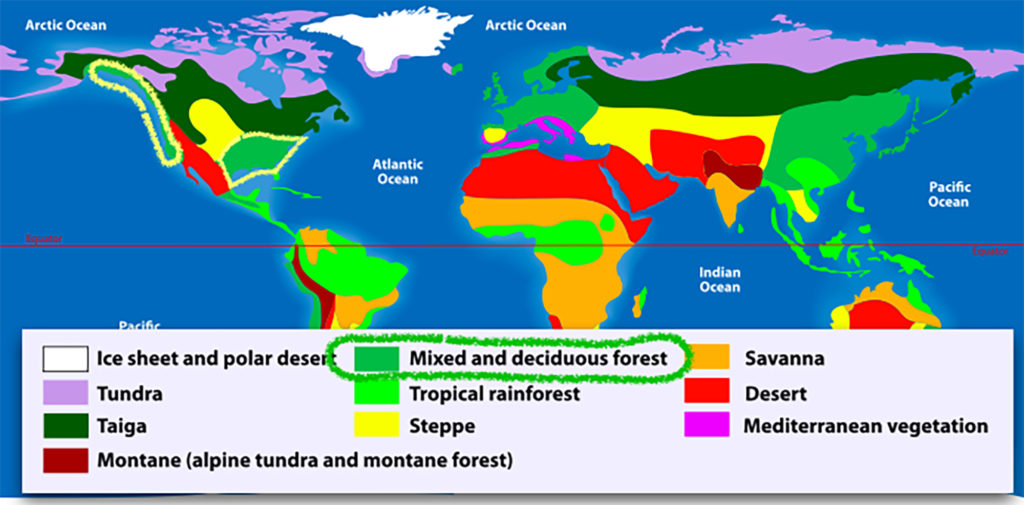
Temperate means moderate, and that describe these forests\’ climate: not too hot and wet like a tropical rainforest; not too cold or drier like the taiga.

Temperate deciduous forests are found in regions that are slightly warmer and wetter when these trees do most of their growing. But the climate conditions are so similar to temperate coniferous, forests can be mixed with both types of trees.

Most of the world\’s temperate forests are managed to produce wood and wood products. It has been challenging to retain natural forest (and stream) habitat for organisms and tourism at the same time as accommodating the economic and cultural needs of the forestry industry.
Forest fire management practices have changed significantly in recent decades with the realization that small frequent fires are more valuable than occasional huge fires.

Tropical Rainforests

Tropical rainforests are found at, or close to, the equator. Direct sunlight rays heat the Earth\’s surface and drive a continual cycle of evaporation and precipitation.

This is a dramatic temperature and precipitation chart! High temperatures and high precipitation all year.
Layers of trees dominate this ecosystem, the canopy is so dense, it looks like you can walk across it. A few species of trees are tall enough to emerge above the canopy, accessing sunlight.
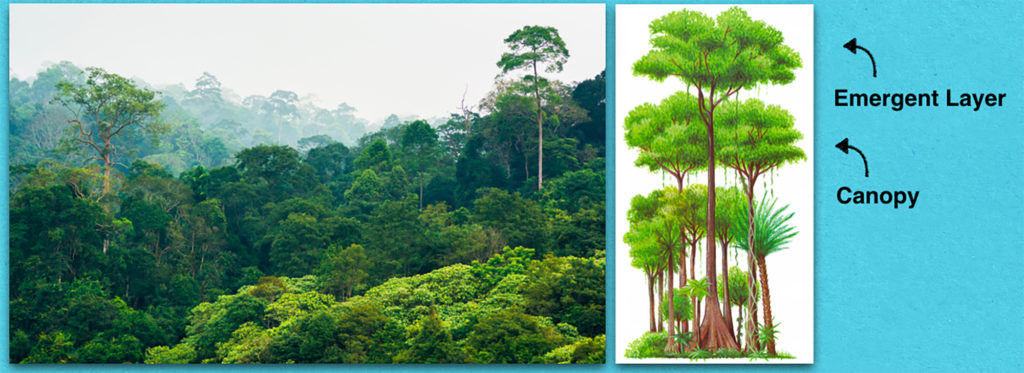

The forest floor can be light limited and plants can have large leaves to trap available sunlight. Some of these plants are popular houseplants due to their massive leaves and lower light requirements.
To access light, some plants climb up the stems of other larger species (lianas) and some trees grow entirely up on high branches, roots and all (epiphytes).

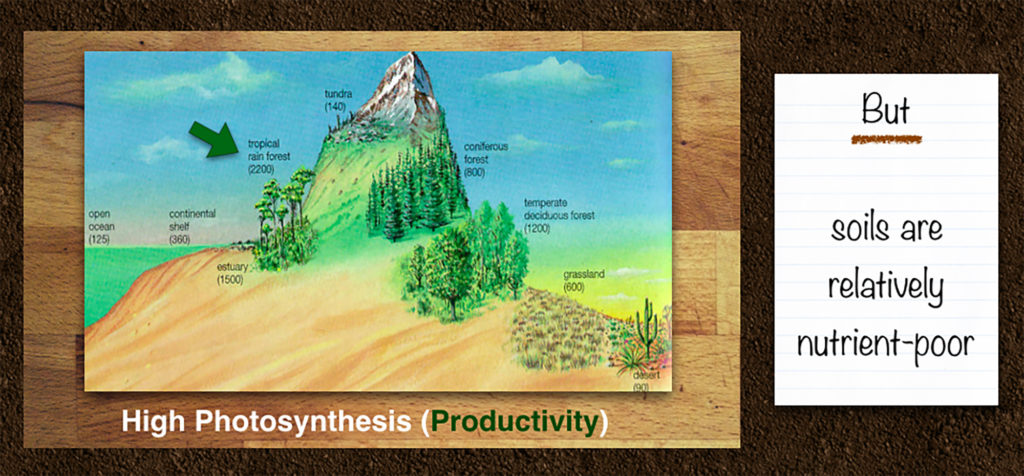
Tropical rainforests have high levels of productivity that supports the highest biodiversity of any terrestrial ecosystem.
But if you pick up a handful of soil, it can be surprisingly nutrient-poor; less nutrients than grasslands or temperate forests.
How is that possible?
It turns out, the nutrients are there, but in the bodies of the organisms themselves. When something dies in these wet and hot forests, it is rapidly scavenged and decomposed. Nutrients cycle right back into the plants.
So, if you remove the trees, the soil that remains is nutrient-poor and prone to erosion.
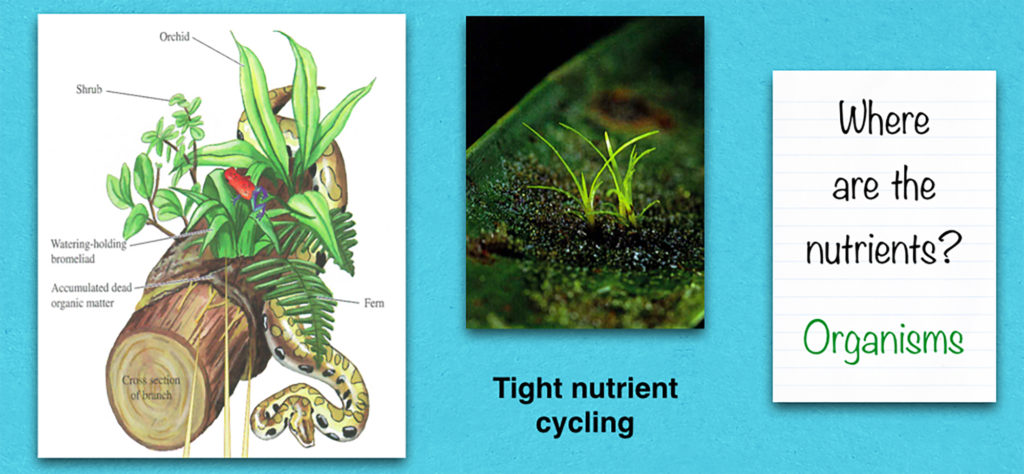
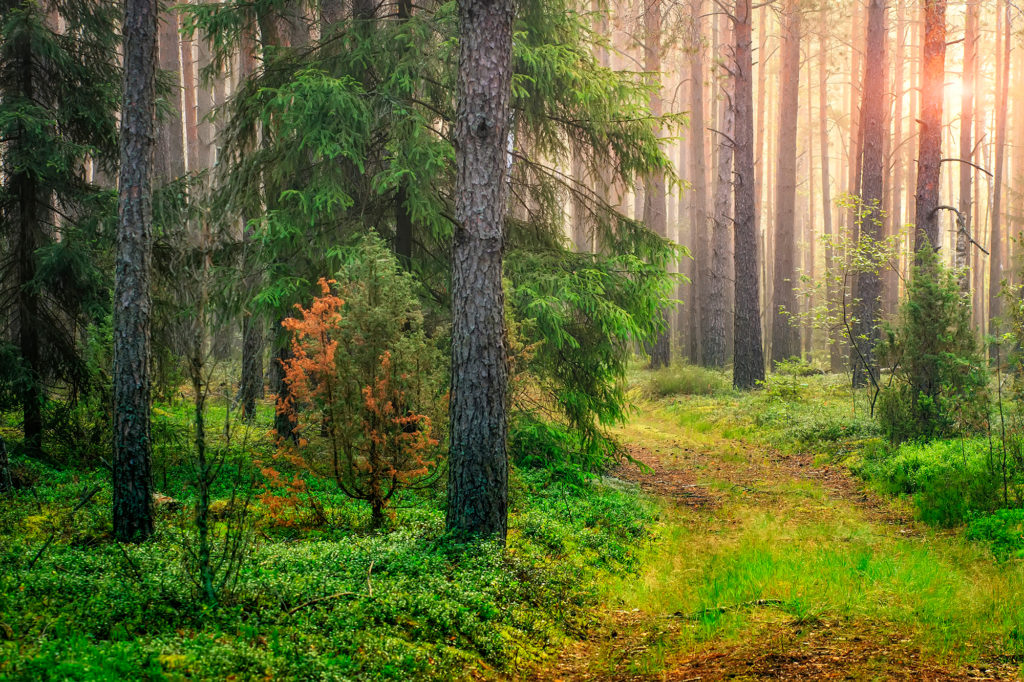
Check your knowledge. Can you:
-
describe the climate characteristics of taiga forests as well as their primary uses?
-
describe the climate characteristics of temperate forests, and explain management issues?
-
describe the climate characteristics of tropical rainforests, and explain how organisms survive low-light and low-nutrient soils?